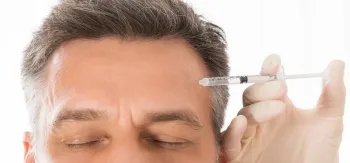
Fat transfer is a method used in some parts of the body where tissue is sunken and emaciated. In general, it is a system that allows to show sunken area more plumped by injecting body fat. Most commonly used areas: forehead, cheeks, lip and cheek line, chin, hip and legs where sinks are seen. In the procedure, fat from human body generally is taken from the abdominal region with the method called liposuction. If there is not enough fat in the abdomen, waist and hip are also used to get some fat.
Fat transfer is performed under local anesthesia. In some difficult aesthetic surgeries, if fat transfer is to be applied to the patient, the procedure is performed under general anesthesia. Fat taken from some parts of the body are transferred to clean injectors after washing and centrifugation and transferring with appropriate injectors to the region. There will be no scars on the body, because there are no cuts done during the procedure. Fat transfer process takes approximately 30 to 60 minutes. Although it is not a hard procedure, it must always be performed in a sterile environment. In addition to transferring the fats fresh from the body to the related area, the fat can also be stored in a sterile environment according to the wishes of the patients. This, the patient will not have to get in fat collecting procedure. It is always better to take and inject fresh fat. In alike procedures, the risk of infection is higher. And the fat that is frozen and transferred is less likely to give a successful result.
You should not use blood thinners before the procedure. If you need to use, you should continue using it after 10 days left the procedure. In addition, if the patient takes regular medication, s/he should inform her/his doctor before the procedure. Taking such measures in the first place will prevent possible bad consequences.
When the procedure is performed, the patient is sent home within a few hours. The patient is sent home because there will not be any major complication whether they have general anesthesia or local anesthesia. Since the area where the transfer is made will be swelled after the procedure, ice bags should be placed on the swelling area to provide relief.
Since bruising and swelling will occur in the areas where fat transfer is be applied, the patient should be able to spend the first few days resting. After bruises and swellings decrease, the patient may return to normal life. But, since the procedure applied to lips is more intense and slightly different, bruising or swelling will take a little longer than normal.